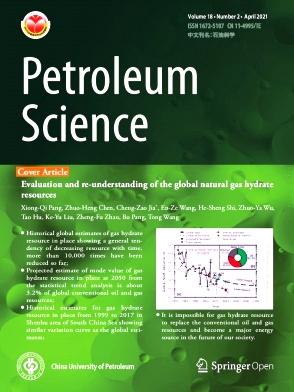整合测井、三维地震和地震数据,综合预测三维原位应力方位:中国四川盆地威远地区案例研究。
IF 6
1区 工程技术
Q2 ENERGY & FUELS
引用次数: 0
摘要
本文章由计算机程序翻译,如有差异,请以英文原文为准。
Integrating well logs, 3D seismic, and earthquake data for comprehensive prediction of 3D in-situ stress orientations: A case study from the Weiyuan area in the Sichuan Basin, China
Determining the orientation of in-situ stresses is crucial for various geoscience and engineering applications. Conventional methods for estimating these stress orientations often depend on focal mechanism solutions (FMSs) derived from earthquake data and formation micro-imager (FMI) data from well logs. However, these techniques can be costly, depth-inaccurate, and may lack spatial coverage. To address this issue, we introduce the use of three-dimensional (3D) seismic data (active sources) as a lateral constraint to approximate the 3D stress orientation field. Recognizing that both stress and fracture patterns are closely related to seismic velocity anisotropy, we derive the orientation of azimuthal anisotropy from multi-azimuth 3D seismic data to compensate for the lack of spatial stress orientation information. We apply our proposed workflow to a case study in the Weiyuan area of the Sichuan Basin, China, a region targeted for shale gas production. By integrating diverse datasets, including 3D seismic, earthquakes, and well logs, we develop a comprehensive 3D model of in-situ stress (orientations and magnitudes). Our results demonstrate that the estimated anisotropy orientations from 3D seismic data are consistent with the direction of maximum horizontal principal stress (SHmax) obtained from FMIs. We analyzed 12 earthquakes (magnitude > 3) recorded between 2016 and 2020 for their FMSs and compressional axis (P-axis) orientations. The derived SHmax direction from our 3D stress model is 110° ES (East-South), which shows excellent agreement with the FMSs (within 3.96°). This close alignment validates the reliability and precision of our integrated method for predicting 3D SHmax orientations.
求助全文
通过发布文献求助,成功后即可免费获取论文全文。
去求助
来源期刊

Petroleum Science
地学-地球化学与地球物理
CiteScore
7.70
自引率
16.10%
发文量
311
审稿时长
63 days
期刊介绍:
Petroleum Science is the only English journal in China on petroleum science and technology that is intended for professionals engaged in petroleum science research and technical applications all over the world, as well as the managerial personnel of oil companies. It covers petroleum geology, petroleum geophysics, petroleum engineering, petrochemistry & chemical engineering, petroleum mechanics, and economic management. It aims to introduce the latest results in oil industry research in China, promote cooperation in petroleum science research between China and the rest of the world, and build a bridge for scientific communication between China and the world.
 求助内容:
求助内容: 应助结果提醒方式:
应助结果提醒方式:


